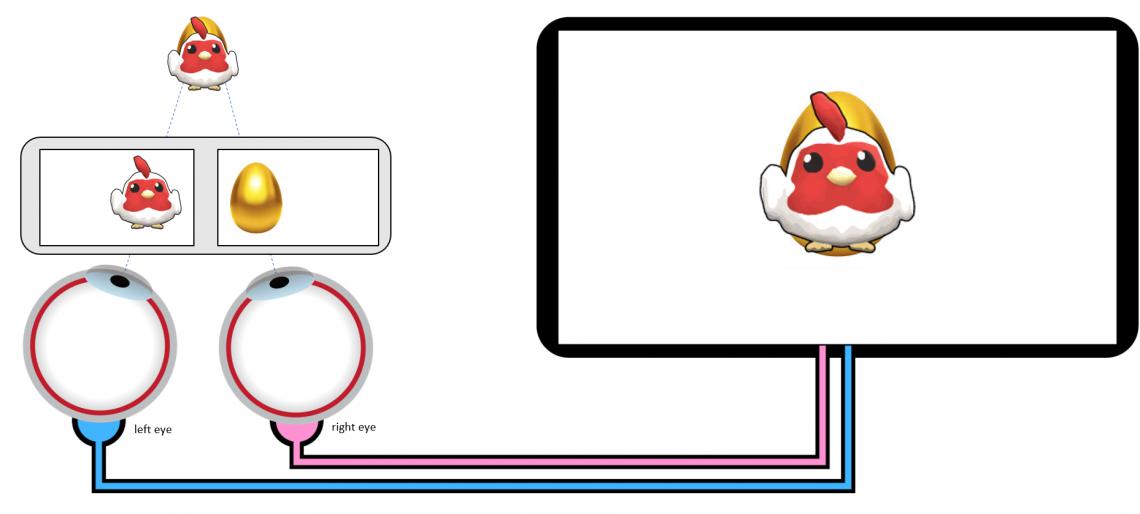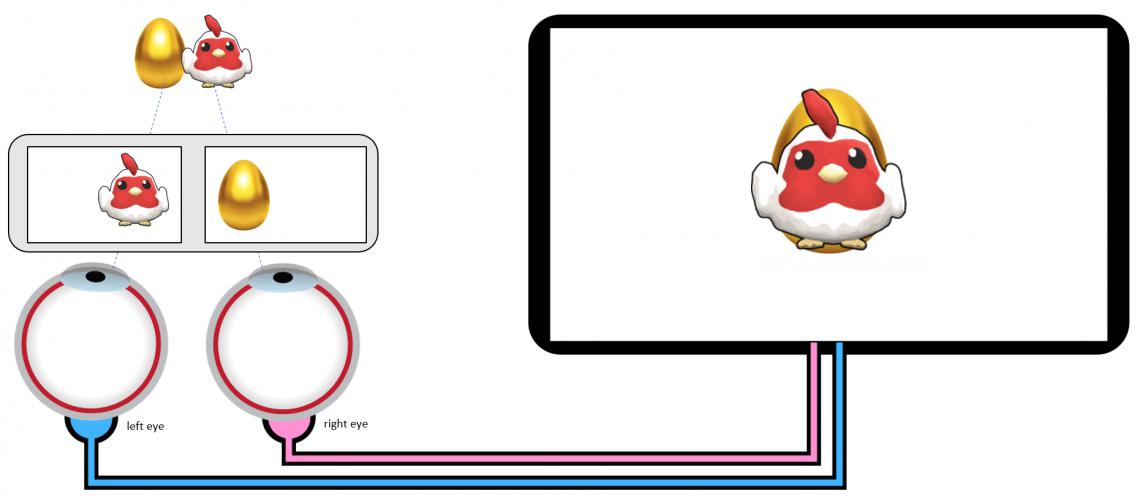Convergence and Divergence
In order for you to look at an object as it moves closer to your face, the eyes must rotate inward (converge) toward the object. When looking at a faraway object, they move by rotating outwards towards the ears or diverge. Convergence and divergence are unique eye movements as these are the only eye movements that are not conjugate (meaning the eyes move in the same direction) but are instead termed disconjugate. The brain is constantly rapidly sampling the visual environment, quickly altering between convergence and divergence, then just as quickly holding eye posture so that the image of interest is stabilized on the retina.
Convergence
Convergence is the ability to turn the two eyes inward toward each other to look at a close object. We depend on this visual skill for near-work activities such as desk work at school, working on a smartphone type device, or even in sports when catching a ball.
Convergence requires a coordinated stimulation of some extraocular muscles at the same time others are relaxed. Convergence occurs by stimulation of the medial rectus muscle of both eyes (third cranial [oculomotor] nerve) while simultaneously relaxing the lateral recti (sixth cranial [abducens] nerve).
More than just simple eye movements occur with convergence. When the eyes converge, the focusing (accommodative) system is engaged, and the pupils get slightly smaller. This set of three processes - technically termed convergence, accommodation, and miosis - is known as the near triad.
Divergence
Divergence is the opposite of convergence and is the ability to turn the two eyes outwards to look at a distant object. We depend on this skill for distance activities such as reading the board at school, driving and watching TV.
To diverge, the opposite of the near triad must occur. Now the eyes diverge, accommodation is inhibited, and the pupils slightly dilate.
What if I Have Trouble Converging or Diverging?
Your optometrist may perform a simple eye test. This test is called the near point of convergence (NPC). This test measures the ability of the patient to keep a target single as it moves closer to the nose. Think of this as the distance from your eyes to the point where both eyes are just unable to maintain focus and start to experience double vision. To perform this test, a clinician will use a small penlight or other fixation target and then slowly move the light towards the patient. The patient is to report when the light breaks into two lights (double vision). The penlight is then moved farther away and the patient is asked when the recovery point (resolution of double vision) occurs.
Some patients struggle with convergence or divergence. Convergence insufficiency (CI) is one of the most common disorders of binocular vision; CI affects approximately 5% of children in the United States and may have a serious impact on an individual's performance in school, choice of jobs, and quality of life. Patients that suffer from CI are unable to keep the eyes converged for an extended period of time. Convergence excess is the opposite of CI. Here a patient over-convergences, which may cause pulling or straining sensations, or an inward eye turn.
Divergence insufficiency is the inability of the eyes to properly and fully diverge. The opposite of divergence insufficiency is divergence excess. Divergence excess is an over-divergence when attempting to look at distant objects.
These conditions that affect convergence or divergence may cause symptoms such as seeing double at near or far while viewing an object. Common symptoms include:
- headaches
- blurred vision
- double vision
- eye strain or fatigue
- sore or watery eyes after a near or far task
- words moving about on a page while reading
- frequenting losing your place while reading
What is it Like to have Convergence Insufficiency?
Reading is a great example of a task that requires normal convergence.

To read, the eyes must rotate inward, the focusing system must engage, and a series of tracking movements are used to move the eyes across a page.

But, if the eyes are unable to maintain a converged position, reading becomes quite difficult! Words may become blurry, doubled, or appear to move around on the page. The end result is often fatigue, headache, and likely avoidance of near work.
Can Convergence or Divergence Problems be Treated?
In short, absolutely. Treatment often focuses on working the ability of the eyes to converge and focus at different distances. Vision therapy uses a series of activities to build up progressively the ability to converge, diverge, and the rapidly alternate between convergence and divergence.
Let's use a VR example. Barnyard Bounce is a game designed to treat convergence insufficiency. In this game, the patient adjusts the horizontal position of a chicken and tries to match the chicken with an egg. In our example, the chicken is visible only in the left eye and the egg is shown only to the right eye (watch the video of the actual task here).

In the above example, the patient must match their convergence ability to the location of the chicken and egg in the VR headset. If the patient's convergence ability is good enough to meet the convergence amount needed in the headset, the chicken and egg match perfectly! The top-left image is the projected location of the chicken/egg images, while the image in the screen to the left shows what the patient's brain interprets the image as.

However, look at what happens if a patient is unable to converge to match the convergence amount needed in the game. Although the patient may perceive the images as overlapping, the actual location of the images is rather far apart.
When Should I see my Eye Care Professional?
The American Optometric Association recommends seeing your eye care professional for routine eye examinations every one to two years, depending on your age, symptoms, and health. If you're experiencing any of the symptoms mentioned above, your eye care professional may suggest vision therapy or may refer you to a behavioral optometrist that specializes in the treatment of binocular disorders. A vision therapy program often includes in-office and at-home therapy activities.
References
The Vision Wiki
- Binocular Vision
- Vision Tests
- Suppression Tests
- Worth 4 Dot
- Tests of Stereopsis
- Cover Test
- Definitions
- Signs and Symptoms
- Blurry Vision
- Reading Problems
- Eye Strain
- Driving Problems
- Headaches
- Suppression
- Double Vision
- Motion Sickness and Car Sickness
- Pias Vision
- Visual Skills
- Visual Tracking
- Visual Fixation
- Stereopsis
- Depth Perception
- Visual Accommodation
- Visual Requirements for Baseball
- Visual Requirements for Pilots
- Reading
- Foundational Reading Skills
- Vision and Learning
- Fusion
- Convergence and Divergence
- Reading Skills
- Visual Processing
- Eye Problems
- Physiology of Vision
- Lazy Eye
- Lazy Eye Treatments
- Reading
- Fields of Study
- Research
- Glaucoma
- Virtual Reality
- Organizations
